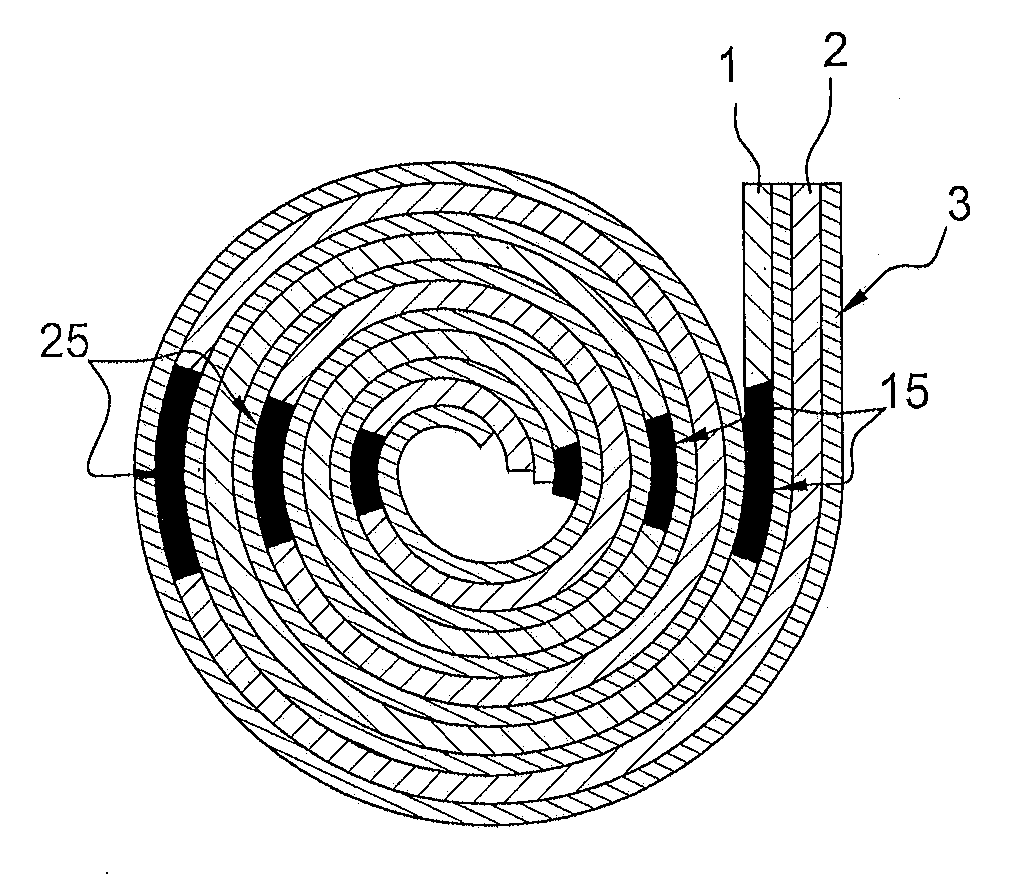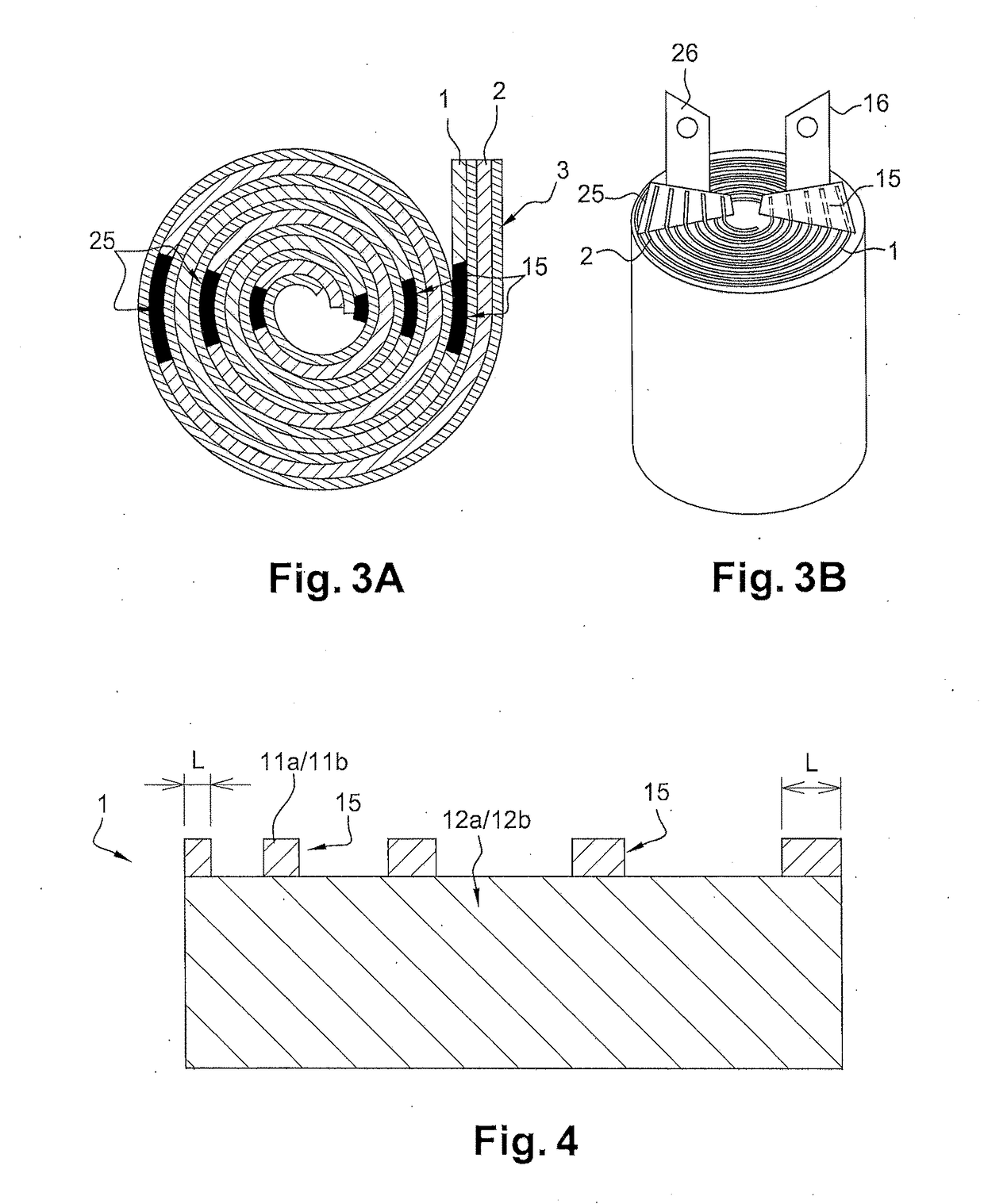Lead-acid accumulator and method for manufacturing such an accumulator
a technology of lead-acid accumulators and accumulators, which is applied in the direction of cell components, final product manufacturing, sustainable manufacturing/processing, etc., can solve the problems of limited active material use, limited lifetime of accumulators, and significant weight of lead current collectors, etc., and achieves high specific energy and extended life
- Summary
- Abstract
- Description
- Claims
- Application Information
AI Technical Summary
Benefits of technology
Problems solved by technology
Method used
Image
Examples
first embodiment
[0099] represented by FIGS. 3A and 3B, respectively in top view and perspective view, the negative 1 and positive 2 electrodes are stacked with two separator sheets 3 formed from the porous and insulating material. This multilayer stack is wound upon itself to give the accumulator a spiral shape.
[0100]The sheets 3 are arranged such that at any point of the winding, one of them separates the negative 1 and positive 2 electrodes. Thus, no short-circuit between the electrodes 1 and 2 is possible and the utilization factor of the electrolyte is maximal. The two separator sheets 3 are for example arranged on either side of the positive electrode 2 in FIG. 3A.
[0101]The separator sheets 3 are, preferably, of AGM (Adsorptive Glass Mat) type, that is to say microporous glass fibers layers. This type of separator is commonly employed in valve regulated lead acid (VRLA) batteries to store the electrolyte and maintain the active material on the electrodes. The sheets 3 have, preferably, a thick...
second embodiment
[0121]FIG. 5 represents, in top view, a lead accumulator, in which the electrodes 1 and 2 are assembled in an undulating shape, in the manner of a serpentine shape. The electrochemical accumulator thus configured is like a prismatic cell, where the positive and negative electrode(s) are lined up in parallel with each other in a parallelepiped case.
[0122]One of the positive and negative electrodes, here the negative electrode 1, is arranged between two separator layers 3, preferably of AGM type. The multilayer stack thereby obtained is folded into a serpentine shape, that is to say in a repeating manner and in opposing senses from one fold 4 to the other. Under each fold 4 is arranged a portion 2′ of positive electrode. These portions 2′ are for example obtained after cutting up a positive electrode 2 of larger dimensions.
[0123]The electrodes of the accumulator also have, in this second embodiment, projecting straps or connection elements 15 and 25. These straps extend in a direction...
PUM
| Property | Measurement | Unit |
|---|---|---|
| thickness | aaaaa | aaaaa |
| thickness | aaaaa | aaaaa |
| thickness | aaaaa | aaaaa |
Abstract
Description
Claims
Application Information
 Login to View More
Login to View More - R&D
- Intellectual Property
- Life Sciences
- Materials
- Tech Scout
- Unparalleled Data Quality
- Higher Quality Content
- 60% Fewer Hallucinations
Browse by: Latest US Patents, China's latest patents, Technical Efficacy Thesaurus, Application Domain, Technology Topic, Popular Technical Reports.
© 2025 PatSnap. All rights reserved.Legal|Privacy policy|Modern Slavery Act Transparency Statement|Sitemap|About US| Contact US: help@patsnap.com



